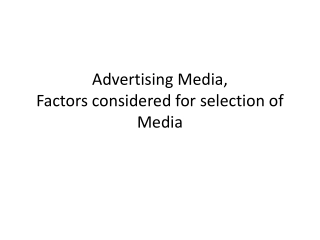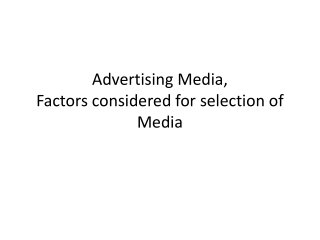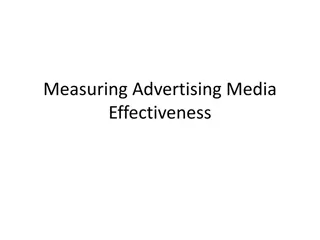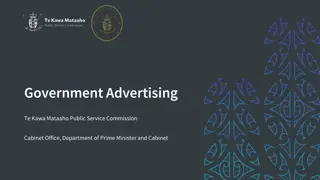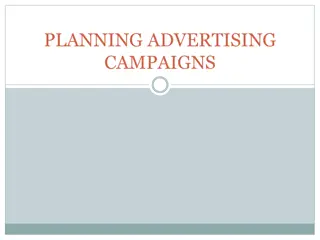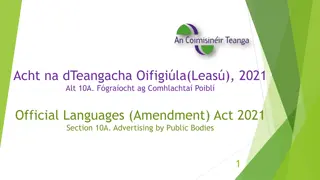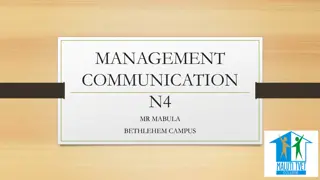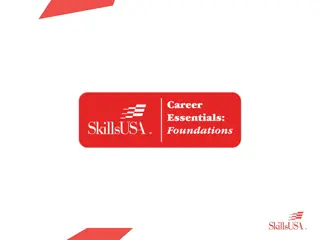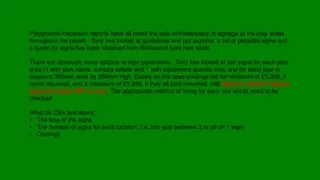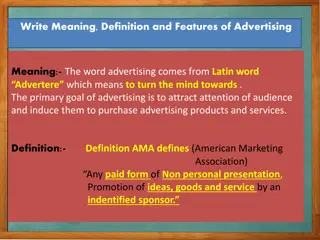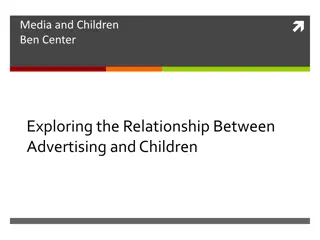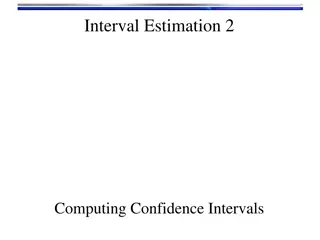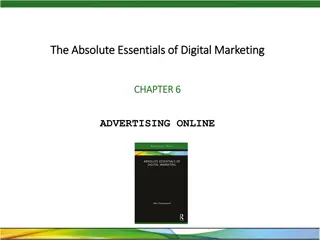Maintaining Public Confidence: FDIC Signs and Advertising Webinar
Join the FDIC's webinar on official signs, false advertising, and more. Learn about maintaining public confidence in the banking system, evolving consumer access to financial products, and recent FDIC regulations. Gain insights from FDIC presenters on key requirements and prohibitions for insured banks.
Download Presentation

Please find below an Image/Link to download the presentation.
The content on the website is provided AS IS for your information and personal use only. It may not be sold, licensed, or shared on other websites without obtaining consent from the author.If you encounter any issues during the download, it is possible that the publisher has removed the file from their server.
You are allowed to download the files provided on this website for personal or commercial use, subject to the condition that they are used lawfully. All files are the property of their respective owners.
The content on the website is provided AS IS for your information and personal use only. It may not be sold, licensed, or shared on other websites without obtaining consent from the author.
E N D
Presentation Transcript
FDIC Official Signs and Advertising Requirements, False Advertising, Misrepresentation of Insured Status, and Misuse of the FDIC s Name or Logo Webinar for Bank Officers, Employees, and Other Stakeholders May 30, 2024
FDIC Presenters Meron Wondwosen, Assistant Director, DCP Supervisory Policy Edward Hof, Senior Policy Analyst, DCP Supervisory Policy Monika Jansen, Senior Policy Analyst, DCP Supervisory Policy 2
Topics to be Covered Overview Description of Part 328, Subpart A Requirements (FDIC Official Signs) Description of Part 328, Subpart B Prohibitions (Misrepresentations) Questions and Answers NONPUBLIC//FDIC INTERNAL ONLY 3
Maintaining Public Confidence in our Banking System The FDIC s mission is to maintain stability and public confidence in the nation's financial system by, among other priorities, insuring bank deposits. The FDIC has helped to maintain public confidence in the nation's banking system in times of financial turmoil, including the 2008 financial crisis, the Covid-19 pandemic, and most recently, when large regional banks failed in the first half of 2023. FDIC sign and advertising statement requirements for insured banks date back to the Banking Act of 1935. 4
Developments in Consumer Access to Financial Products Banks ATMs and digital banking channels (website or mobile app) now serve as a digital teller window for many consumers. Bank branch layouts have evolved, including use of electronically-staffed kiosks, interactive ATMs, and teller-less caf s where deposits are accepted via tablets or ATMs. Growth in fintech companies offering new options for accessing financial products can blur the distinction between banks and non-banks, increasing the potential for consumer confusion regarding FDIC deposit insurance coverage. Deposits and non-deposit products offered through same banking channel. Increasingly broad array of financial products are offered through banking channels, including non-deposit products. 5
FDIC Official Signs and Advertising Requirements, False Advertising, Misrepresentation of Insured Status, and Misuse of the FDIC s Name or Logo In December 2023, the FDIC published a final rule that amended Part 328 of the FDIC s regulations, which includes: Subpart A - rules governing all FDIC-insured banks use of the official FDIC sign, a new FDIC official digital sign for bank websites, apps, and ATMs, non- deposit signage, and updates to the advertising statement. FDIC official sign (traditional physical black and gold) FDIC official digital sign (new navy blue and black) Non-Deposit signage (to differentiate insured deposits from non-deposit products) 6
FDIC Official Signs and Advertising Requirements, False Advertising, Misrepresentation of Insured Status, and Misuse of the FDIC s Name or Logo Subpart B - rules on misrepresentations regarding deposit insurance coverage and misuse of the FDIC s name and logo, which apply to any person, including banks or non-bank entities. Clarify FDIC regulations regarding misrepresentations of deposit insurance by providing examples of specific situations when consumers may misunderstand orbe misled about deposit insurance coverage. Consumer Disclosure (i.e., display of non-deposit sign ) by Nonbank Entities: A person makes statements regarding deposit insurance in a context that involves both deposits and non-deposit products offered on a website in close proximity , butfails to state that non-deposit products: are not insured by the FDIC; are not deposits; and may lose value. Effective date is April 1, 2024; Compliance date is January 1, 2025. 7
Final Rule Objectives Modernize the FDIC Official Sign and Advertising Rules to ensure they keep pace with significant changes that have taken place in the banking industry and that they reflect how consumers engage with banks today. Address risk of consumer confusion by requiring clear disclosuresthat enable consumers to better understand when they are interacting with an IDI and when their funds are protected by the FDIC s deposit insurance coverage. Clarify the FDIC's misrepresentation rules to address misconduct by persons misusing the FDIC nameor logo and inaccurately describing deposit insurance coverage. 8
FDIC Official Sign: Updated Requirements Branches with teller windows or stations. If IDIs usually and normally receive deposits at teller windows or stations, IDIs are generally required to display the official sign at each teller window or station. Status quo - Not a new requirement. If non-depositproducts are not offered in the branch, IDIs have new flexibility to: Place the official sign next to each teller window; OR Display official signs visible from tellerwindows that are large enough to be legible from anywhere in the deposit-taking area. IDIs have new flexibility to utilize electronic media (e.g., TV screen or tablet) to satisfy sign requirements on an IDI s premises, but it must be clear, continuous and conspicuous. For example, a "rotating display" of the official sign would not be continuous. 9
Official FDIC Sign: Updated Requirements (contd) Branches and other physical premiseswithout teller windows (e.g., caf s). Physical premises: A bank's place of business where consumers have access to, or transact with, deposits, including branches and other physical premises (e.g., caf -style locations): Banks must display the official sign in one or more locations in a size large enough to be legible anywhere in those deposit taking areas. Like in branches with teller windows, Banks have the new flexibility to use electronic media (e.g., TV screen or tablet) to satisfy sign requirements on an IDI s premises, but it must be clear, continuous and conspicuous. 10
Non-Deposit Product (NDP) Definition and Sign Definition: Non-Deposit Product means any product that is not a deposit , including, but not limited to: insurance products, annuities, mutual funds, securities, and crypto-assets. For purposes of this definition, credit products and safe deposit box services are not Non-Deposit Products. In banking channels where both insured deposits and non-deposit products areoffered, the rule requires the use of a non-deposit sign indicating non-deposit products are: not insured by the FDIC; are not deposits; and may lose value: Bank branches and other physical premises: at each location within the premises where non-deposit products are offered, clearly, continuously, and conspicuously display non-deposit signs. Also, similar to the 1994 interagency retail sales of non-deposit products guidance, banks generally must segregate non-deposit product areas from areas where deposits are usually and normally accepted. 11
Bank Branches: Official Sign & Non-Deposit Sign Addresses potential consumer confusion where deposits and NDPs are offered in branches with teller windows. Banks must keep the current teller signs next to each teller windows (no flexibility to replace each teller sign with fewer, larger official signs); and Generally required to physically segregate the areas where non-deposit products are offered from areas where insured deposits are usually and normally accepted; and Display sign(s) in non-deposit area(s) indicating non-deposit products: are not insured by the FDIC; are not deposits; and may lose value; and Don t display non-deposit signs in close proximity to FDIC official sign. 12
Bank Branches: Official Sign and Non-Deposit Sign (Cont'd) Addresses potential consumer confusion where deposits and NDPs are offered in locations with no teller windows and no well-defined deposit area. New Requirements: Deposit areas: Required to display the official sign in one or more locations in a size large enough to be legible anywhere in those deposit taking areas. Non-deposit product area. Generally required to physically segregate the areas where non-deposit products are offered from deposit area; and Display sign(s) indicating that non-deposit products: are not insured by the FDIC; are not deposits; and may lose value; and Don t display non-deposit signs in close proximity to the official sign. 13
Answers to Common Questions How should NDP areas be physically segregated? What does physical segregation mean? What does continuous mean in a branch context? Are the non-deposit sign requirementsbased on thebranch network, or is it on a per-branch basis? 14
New FDIC Official Digital Sign New FDIC official digital sign for bank websites, apps, and ATMs 15
Banks Deposit Taking ATMs and Like Devices New FDIC official digital sign requirement for bank ATMs and like devices: Display the FDIC official digital sign: Clearly, continuously, and conspicuously; On the home page or screen and each transaction or screen relating to deposits. Optional: Displaying FDIC physical official sign is acceptable, but only for deposit-taking ATMs that: DO NOT offer access to NDPs and Were put into service before January 1, 2025. 16
Banks Deposit Taking ATMs & Like Devices (contd) Non-deposit sign for bank ATMs that receive deposits AND offer access to non-deposit products must: Display the official digital sign on the home screen and all deposit-related screens. Clearly, continuously, and conspicuously indicate, on each transaction page or screen relating to non-deposit products, that non-deposit products: are not insured by the FDIC; are not deposits; and may lose value. Such signage may not be displayed in close proximity to the FDIC official digital sign. There is no option to post the physical FDIC official sign on ATMs that offer access to non-deposit products. 17
Clear, Conspicuous, and Continuous Clear and Conspicuous. Under the final rule, evaluation of whether the sign is clear and conspicuous will include assessing proximity, placement, and prominence. The final rule notes that FTC guidance on effective disclosures provides helpful principles. Clear and conspicuous is: Difficult to miss; Easily noticeable; and Easily understandable by ordinary consumers. Under the final rule, signs must also be displayed continuously, emphasizing the importance of duration in clear and conspicuous. 18
New FDIC Official Digital Sign for Bank Websites and Apps New requirement: On bank websites and apps, IDIs must display the FDIC official digital sign: Clearly, continuously, conspicuously; Near the top of a page; and In close proximity to the bank s name. FDIC official digital sign must be displayed on: The IDI s homepage; Landing and login pages or screens; and Transactional pages or screens involving insured deposits. 19
New FDIC Official Digital Sign for Bank Websites and Apps (cont d) New advertising statement flexibilities: If a page on a bank's website/app has the new FDIC official digital sign and could be considered an advertisement, the banks can, if they choose, but are not required to, remove the Member FDIC or Member of FDIC logo. IDI s may opt to use the new FDIC-insured language to satisfy advertisement statement requirement instead of Member FDIC or Member of FDIC . 20
An example: New FDIC Official Digital Sign for Bank Websites and Apps 21
Non-deposit sign requirements for Bank digital deposit-taking channels Static Sign on a bank s website. On each page relating to non-deposit products,display a non-deposit sign clearly, conspicuously, and continuously indicating that: Non-deposit products: Are not FDIC insured; Are not deposits; May lose value. There is no size or design requirement for how this statement is displayed, provided the message is displayed clearly, continuously, and conspicuously. 22
Non-deposit sign requirements for IDI digital deposit-taking channels One-time per session notification: Applies when a logged-in bank customer accesses non-deposit products from a non-bank third party s website via an IDI s digital deposit-taking channel (e.g., through a hyperlink). Must be dismissed by an action of the bank customer before initially accessing the third party s online platform. Must clearly and conspicuously indicate that the third party s non-deposit products: are not insured by the FDIC; are not deposits; and may lose value. Example: The one-time notification could be a pop-up , speedbump , or overlay that the customer must dismiss before accessing the third party s website. 23
Misrepresentation of Deposit Insurance The FDIC has observed an increase in misleading representations about deposit insurance on the internet, primarily by nonbank entities, which can result in consumer confusion and harm. The facts and circumstances of these situations vary on a case-by-case basis (for more specific examples, see Prohibition under Section 18 (a)(4) of the Federal Deposit Insurance (FDI) Act). These types of misleading statements create uncertainty and could dilute and undermine the public confidence that underpins banks and our nation s broader financial system. The final rule addresses specific situations whereconsumers may be misled about deposit insurance. 24
Part 328, Subpart B Nonbank Entity Authority Under section 18(a)(4) of the Federal Deposit Insurance Act (FDI Act) and its implementing regulation, 12 C.F.R. Part 328: The FDIC has authority over persons The FDIC has independent authority to investigate and take administrative enforcement actions and the power to issue cease and desist orders and impose civil money penalties against any person who misuses the FDIC name or logo or makes misrepresentations about deposit insurance. 25
Misrepresentations of Deposit Insurance: Overview Misuse of the official advertising statement, official digital sign, or other FDIC- Associated Terms or FDIC-Associated Images by non-banks presents a high risk of confusing consumers and may lead them to believe they are dealing with a bank. To address this risk, the final rule further clarifies the misrepresentation statute insituations whereconsumers may be misled about deposit insurance. Areas of potential confusion: Bank vs non-bank FDIC-insured deposit vs uninsured NDP Pass-through insurance - automatic or not? 26
Misrepresentations of Deposit Insurance Section 18(a)(4) of the FDI Act and its implementing regulation, Part 328 Subpart B, prohibit any person from misusing the name or logo of the FDIC, engaging in false advertising, and making knowing misrepresentations about deposit insurance. Part 328 Subpart B Violations: 1. A person makes statements regarding deposit insurance in a context that involves both deposits and non-deposit products offered on a website in close proximity , butfails to state that non-deposit products: are not insured by the FDIC; are not deposits; and may lose value. 27
Misrepresentations of Deposit Insurance (Contd) Part 328 Subpart B Violations (cont d): 2. A non-bank s use of either the official FDIC sign or the new FDIC official digital sign in a manner that inaccurately states or implies the non- bank is FDIC insured. 3. Anon-bank makes a statement regarding deposit insurance, butfails to state that it is itself not FDIC-insured and that deposit insurance applies only if an insured bank fails. 28
Misrepresentations of Deposit Insurance (Contd). Part 328 Subpart B Violations (cont d): 4. Anon-bank makes a statement that represents or implies that an advertised product is insured or guaranteed by the FDIC, but fails to clearly and conspicuously identify the IDI(s) that (directly or indirectly) may hold customer funds. 5. A person makes statements regarding pass-through deposit insurance for its customers funds, butfails to state clearly and conspicuously that certain conditions must be satisfied for pass-through deposit insurance coverage to apply. 29
Banks' Policies and Procedures Requirement Under Subpart A, banks will be required to establish and maintain written policies and procedures addressing compliance with Part 328. Such policies and procedures must: Be commensurate with the nature, size, complexity, scope, and potential risk of the deposit-taking activities of the bank; and Include, as appropriate, provisions related to activities of persons (third parties) that 1. Provide deposit-related services to the bank, or 2. Offer the bank's deposit-related products or services to other parties. This requirement is consistent with theInteragency Guidance on Third-Party Relationships: Risk Management (FIL-29-2023). 30
Part 328 Implementation Compliance Date - January 1, 2025: Four bankerseminars in 2024 for Part 328 stakeholders,with question and answer sessions. FDIC staff responding to questions from the bankers, industry groups, andthepublic. 31
Part 328 Webinar for Bank Officers, Employees, and Other Stakeholders Questions? DepositInsuranceBank@FDIC.gov 32



